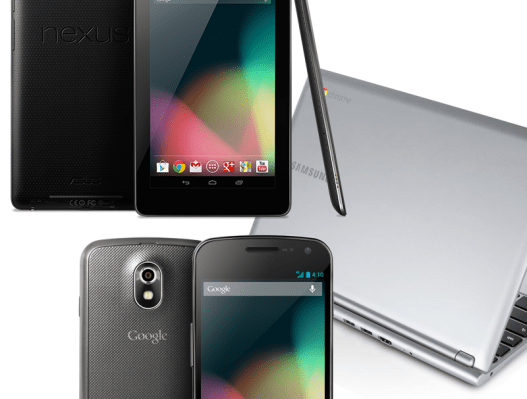Google CEO Larry Page spent a good portion of his time on today’s Google company earnings call to talk about multiscreen opportunities, and how Google is addressing them. He said that just as with search back in 2000, Google has “enormous opportunity” to drive new monetization routes, and talked about moving seamlessly in day-to-day computing from his Nexus smartphone, to his Nexus tablet, and now to his brand new Chromebook.
The opportunity for Google in cross-screen experiences will be best capitalized-upon by continued product focus, with Page saying sunsetting products was a key component of that strategy. All told, he said 19 products were sunsetted last month quarter. To emphasis the importance of screen independence to Google’s business, which he said is “at the core of [Google’s] strategy] Page discussed three key product areas: Chrome, Google+ and online advertising.
Page pointed out that Chrome can now seamlessly share content across platforms, with users picking up and leaving off browsing experiences at will. “Search on the desktop, and the result is right there on your smartphone,” he said. “Click the back button and it just works.” Other examples he discussed were Google+, in terms of consumer products, which offers the ability to sync photos across platforms.
But the big story for Google’s revenue picture is in cross-platform advertising. Google SVP and Chief Business Officer Nikesh Arora discussed how soon we can expect screens to combine, saying that “in the medium term, these screens will converge.” Page discussed taking away the technical concern from advertisers, noting that “advertisers should be free to think about their campaigns while we do the hard work of tailoring it to each platform.”
To do that, Arora says Google is putting the same focus on mobile and video that we have on search advertising in the past. The idea is to make sure that as users move to multiscreen computing environments advertising keeps pace. To that end, he cited the example of a T-Mobile ad campaign that used location information to tailor ads to users and the devices they were on.
It’s clear this is an important area for Google, and a way in which it sees its $8 billion mobile revenue run rate being leveraged to benefit advertising and engagement across its various platforms. It’s clear we’ll see much more of a push and more innovation in the area of cross-platform advertising from this company in the near future.

